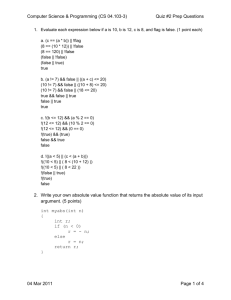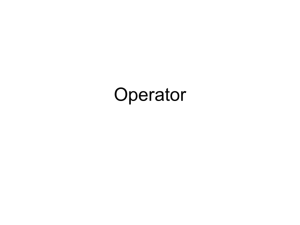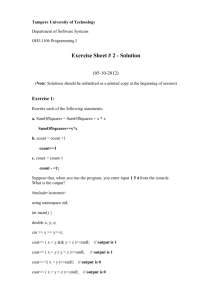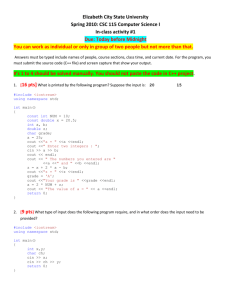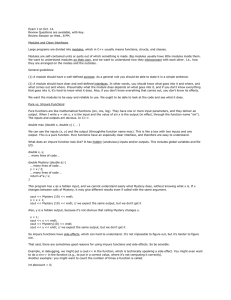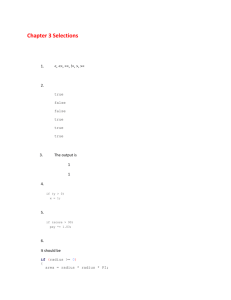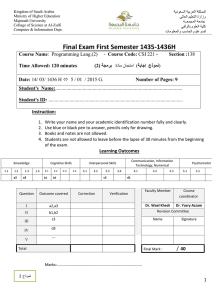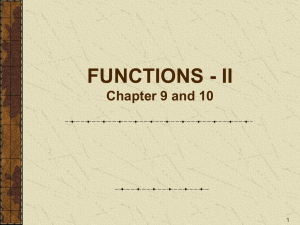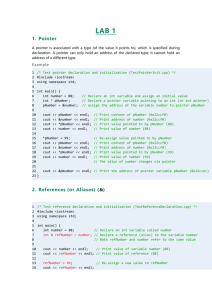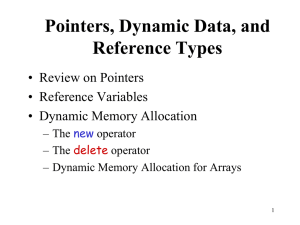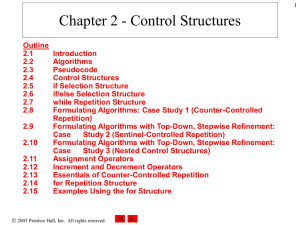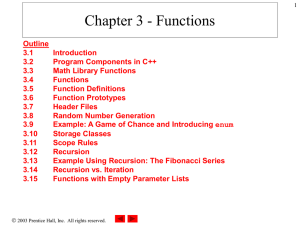Tutorial 11 Pointers and Call by Reference 1.
advertisement
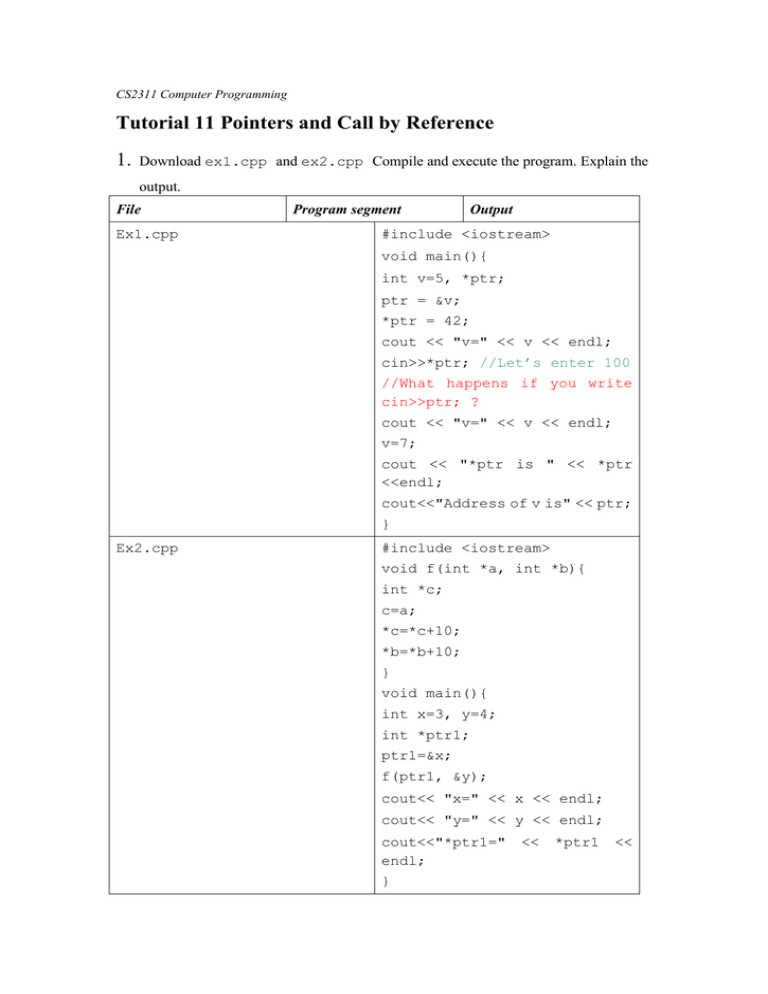
CS2311 Computer Programming
Tutorial 11 Pointers and Call by Reference
1.
Download ex1.cpp and ex2.cpp Compile and execute the program. Explain the
output.
File
Ex1.cpp
Program segment
Output
#include <iostream>
void main(){
int v=5, *ptr;
ptr = &v;
*ptr = 42;
cout << "v=" << v << endl;
cin>>*ptr; //Let’s enter 100
//What happens if you write
cin>>ptr; ?
cout << "v=" << v << endl;
v=7;
cout << "*ptr is " << *ptr
<<endl;
cout<<"Address of v is" << ptr;
}
Ex2.cpp
#include <iostream>
void f(int *a, int *b){
int *c;
c=a;
*c=*c+10;
*b=*b+10;
}
void main(){
int x=3, y=4;
int *ptr1;
ptr1=&x;
f(ptr1, &y);
cout<< "x=" << x << endl;
cout<< "y=" << y << endl;
cout<<"*ptr1="
endl;
}
<<
*ptr1
<<
CS2311 Computer Programming
2. Download current.cpp (You need to test this question on PASS)
Modify the program to compute the value of current(I), given the values of resistance (R)
and voltage (V), where
I=V/R
For example, when voltage=5.1 and resistance=2, the current is 5.1/2=2.55
The program should be made up of three functions.
getInput: get the voltage and resistance from user using call by reference. The return type
of this function is void.
toCurrent: calculate the current I given V and R. The function should return a real number
for the value of I.
main: calls getInput() to obtain V and R by using call by reference. After that, the
program should pass V and R to the function toCurrent() to obtain I. Finally, the value of
I is printed (to 2 decimal places, with cout << fixed << setprecision(2) << I << endl; )
Sample input/output: Please enter the resistance: 5
Please enter the voltage: 2
The value of current is 0.40

